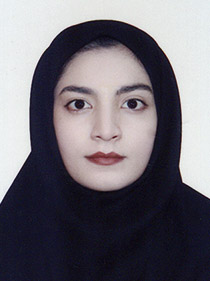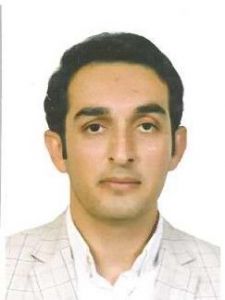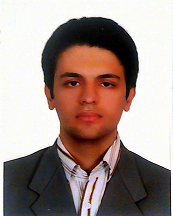M. Sc. Thesis

Author Introduction:
First name: Saba
Last name: Amjadian
Entrance year: 2020
Defense date: 2023/Sep/20
Email address: saba.amjadian@email.kntu.ac.ir
Title: Designing the trajectory of the exploratory mission to the moon
Abstract:
In this research, past information and discoveries have been reviewed and it has been shown that a number of facts about the moon and its formation mechanism have been ignored. This research shows that the moon is a suitable platform for testing new technologies in the field of planetary exploration. Also, in this thesis, we examine the most important probes sent to the moon. The main goal in this research is to find the exact path of the spacecraft, especially in the regimes where several objects act on the spacecraft.
This simulation develops a more accurate model (an N-Body astronomical model). Using the astronomical positions of the Earth, the Moon and the Sun, the purpose of this research is to build and test the code of a more accurate numerical model for route design. Writing and testing the code for modeling the paths of a spacecraft is done in MATLAB. The study of the motion of the Earth, Moon and Sun is integrated into MATLAB for calculations using NASA’s SPICE toolbox. The circular orbit and trajectory of the LADEE mission is used as a test case for the numerical model. Finally, the results are compared with NASA’s GMAT program.

Author Introduction:
First name: Katayoon
Last name: Kankia
Entrance year: 2020
Defense date: 2023/Sep/20
Email address: katayoonkankia@yahoo.com
Title: Feasibility of using supercapacitor in the design of cubesat electric power subsystem
Abstract:
Nowadays, given the appropriate performance of small satellites, there is a need to increase the storage capacity of electric power in the design and construction of these satellites by our beloved country, Iran, as payloads become more complex. This research focuses on designing and implementing a subsystem for electric power for a 1U CubeSat using supercapacitors in the energy storage section. To do so, first, statistical analysis of existing satellites and the European space standard for power subsystems will be examined, and based on this, the principles of designing and constructing the hybrid energy storage section, which includes both batteries and supercapacitors, will be explained.
The criteria for designing and selecting suitable supercapacitors as well as various circuits for use in the satellite’s electric power subsystem are based on statistical studies and analyses performed to meet the peak power demand of power-hungry equipment. The effort is to increase the advantages of this subsystem and reduce its disadvantages. The main advantages of this research are reducing the volume and charging time of the power subsystem and achieving high-power peaks.
In general, the new technology of supercapacitors increases the reliability of the satellite’s performance. Additionally, by increasing the capacity of the energy storage section, the number of solar panels and batteries reduces, affecting the overall mass budget of the satellite.

Author Introduction:
First name: Shahram
Last name: Keshavarzi
Entrance year: 2020
Defense date: 2023/Sep/12
Email address: Shahram.keshavarzi@email.kntu.ac.ir
Title: Autonomous optical navigation of interplanetary cubesats
Abstract:
Mission planning for space exploration typically relies on determining the Earth orbit to determine the appropriate position and guide the spacecraft towards the mission objective. This process involves ground tracking stations and flight dynamics teams for communication and control of spacecraft in deep space, contributing to the overall cost of space missions. However, recent expansion of CubeSat satellites challenges this paradigm, where interplanetary spacecraft navigations are employed. In fact, miniature spacecraft increase the total number of spacecraft launches per year, leading to saturation of ground tracking equipment. Additionally, the overall cost of interplanetary CubeSats decreases compared to traditional spacecraft, except for navigation-related cases. This is because similar ground stations and teams need to be in place to control spacecraft regardless of platform size. For these reasons, increased autonomy for spacecraft in interplanetary and deep space is required for CubeSat satellites.
This thesis presents a general approach for optical tracking based on planet observations and navigation for spacecraft without access to ground-based distance measuring sources. By employing this method, a spacecraft is able to determine its relative position independently. The spacecraft achieves this by optimizing Gauss-Newton and focusing on position determination. The navigation method presented in this thesis has the capability to be implemented in any equipped spacecraft.
.

Author Introduction:
First name: Mahdi
Last name: Rivandi
Entrance year: 2019
Defense date: 2022/Sep/22
Email address: mahdi.rivandi(at)email.kntu.ac.ir
Title: Upgrade balance system for CubeSat attitude simulator based on the air bearing platform
Abstract:
In order to test the attitude control of a satellite, it is necessary to have attitude control simulator, and this simulator must also be placed in the condition of balance, including weight. This thesis was carried out in the form of simulation and implementation, to simulate the deviations caused by the difference between the center of mass and the center of rotation, And also the movement of two horizontal operators, which causes rotational and vortex movement in the balance system, is entered as a disturbance in the balance system. For simulation, PID closed loop controller was chosen for three axes. Implementation based on the same observational models, time settings and experimental coefficients, without using control coefficients with an accuracy of 0.2 and 0.5 under Euler angles; the roll and twist became stable in 25 seconds, the presence of the third axis did not have a positive effect on the balance system. Moving masses were used for the horizontal axis, in which we see the roll and pitch changes, and for the third axis, in which we see the yaw changes, a reaction wheel was used.
.

Author Introduction:
First name: Morteza
Last name: Abbasi
Entrance year: 2019
Defense date: 2022/Mar/02
Email address: morteza.abbasi(at)email.kntu.ac.ir
Title: Simulation and implementation of interplanetary CubeSat closed-loop attitude control based on the air-bearing platform
Abstract:
With the increasing expansion of interplanetary missions and space exploration, flight control, guidance, and navigation programs for space systems have become very important. In this research, we first design and develop a suitable test platform to simulate the operating environment of the spacecraft in performing orbital missions, such as orbital maneuvers, orbital appointments, connection, flight arrangement, as well as the removal of space debris; Then, we develop and explain the flight plan used for the proximity mission to an asteroid and finally the environment for performing hardware implementation tests in the ring. This research was carried out in the space research laboratory of the Faculty of Aerospace Engineering, Khajeh Nasir al-Din Toosi University of Technology. On the whole, a testbed with the capability of 3 degrees of freedom of movement (2 degrees of transfer, 1 degree of position), guidance algorithm, navigation, and closed-loop control Near an asteroid and space simulator environment was developed for interplanetary missions.

Author Introduction:
First name: Mojtaba
Last name: Namvar
Entrance year: 2018
Defense date: 2022/Jan/12
Email address: Namvar(at)email.kntu.ac.ir
Title: Electro-optical orbit determination with using the COTS equipment
Abstract:
Determining the orbits of satellites is essential for planning and carrying out space projects. As in the past, the issue of determining the orbits of planets and objects in space has been considered by scientists, with the pervasiveness of space missions and the increase in the number of satellites, the need for continuous monitoring of space is increasingly considered by space organizations around the world. Also, in recent years, with the launch of satellite mega constellations and the stunning increase in the number of satellites in orbit, it has created a new challenge for astronomical observatories in imaging the night sky, which shows the importance of determining the position of satellites. In this dissertation, by examining the orbit determination methods, we have gone to the angle only orbit determination methods and using image processing algorithms, the data obtained from electro-optical instruments (including COTS) have tried to determine satellites’ orbit.

Author Introduction:
First name: Alireza
Last name: Amirkhani
Entrance year: 2018
Defense date: 2021/Oct/17
Email address: a.amirkhani(at)email.kntu.ac.ir
Title: Design and implementation of attitude determination system for Cubesat using image processing with deep learning
Abstract:
For many years, satellite attitude determination has been done using sensors such as sun sensors, earth horizon sensors, magnetometers, and star trackers, each of which has advantages and disadvantages in terms of accuracy and cost. As a new method to increase the accuracy and reduce the cost of the satellite sensor package, using artificial intelligence technology and in particular, the machine learning algorithms for satellite attitude determination have been proposed.
This research presents an algorithm based on deep learning for attitude determination, considering many applications of computer vision in improving the accuracy of imaging sensors. In fact, the proposed algorithm is extracted using a deep neural network and been tested on the images captured by the simulated camera sensor as a satellite payload. Earth images were also generated in this research using simulations in STK software. The algorithm is implemented in the laboratory and on the actual hardware. This method is effective in reducing the size, mass, and cost of the attitude sensor while increasing the accuracy of the attitude determination system.
Publication:
1- Space Bus in GEO, presented at the 18th International Conference of Iranian Aerospace Society (Aero 2020), Iran/Tehran, 2020.
2- Communication Space Bus in GEO, Journal of Technology in Aerospace Engineering. 2021.

Author Introduction:
First name: Mohammad Ali
Last name: Ebrahimi
Entrance year: 2017
Defense date: 2019/Dec/18
Email address: mohammadali2080(at)email.kntu.ac.ir
Title: Optimal System Design of GEO Communication Satellite Under Uncertainty
Abstract:
Geo Communication Satellite are most practical and profitable satellites.They have defined with plenty of applications. The application interested in this dissertation are providing Broadcasting services for other Ground station.Design and Manufacturing this kind of satellite is too expensive. In this thesis tried to achieve robust optimization design of this kind of satellite and compare it with case study. For this purpose a convenient method to design is submitted. Modeling this satellite is considered of two segment Bus, Payload. Payload have a responsibility to do a mission of sending and receiving of digital data that is known as Communication Payload. Bus includes of five subsystems (Propulsion, Power, ADCS, Thermal Control and Structure) that have responsibility to support Payload. Also by considering the fuel of launcher the costs of manufacturing, Maintenance and launch will be counted. Furthermore, in order to be more beneficial for multiobjective optimization method used. Therefore customer could select desired option between pareto-front solutions. The objectives is intended to use in this dissertation are increasing revenue and decreasing cost. At last, by considering Probability distribution (Uncertainty) of variables design Optimal and Robust design against their effects will be presents. The method used for satellite optimization design is Non-dominated sorting genetic algorithm and the ones used for sampling uncertainties are Monte Carlo Sampling. In this dissertation Results of Modeling evaluated with case study and less difference reported. Also by Optimization Design the optimized solution than the case study has been achieved. At last impression of uncertainty decreased by robust optimization design.

Author Introduction:
First name: Zeinab
Last name: Soltani Mohammadi
Entrance year: 2016
Defense date: 2019/Sep/16
Email address: arghavanzsm(at)gmail.com
Title:Design, simulation and manufacturing a sample cubesat with a magnetic-based control system
Abstract:
According to the high cost of manufacturing and launching a satellite, confirming the accurate functionality of each subsystem is extremely momentous. So, many tests are supposed to be done to validate the performance of a satellite.
One of the most significant subsystems of a satellite, that should be tested before its launch, is the attitude determination and control system (ADCS). For this purpose, a testbed must be prepared to simulate the environmental conditions of the space for the satellite. The zero-gravity condition is simulated using an air bearing, and a Helmholtz cage simulates the magnetic field that the satellite will face on the orbit.
Different control modes are applied to the satellite during its mission. After the satellite is separated from the launch vehicle, the detumbling mode will decrease its angular velocities using magnetic actuators to prepare it for other required control modes on its mission.
The purpose of this project was to manufacture and test a sample magnetic-based cubesat (a category of the satellites with specified standards) and test the functionality of the magnetorquers in the detumbling mode. Two sets of magnetorquers were tested using the prepared testbed and showed that the magnetorquers would damp the angular velocities of the cubesat in less than 20 minutes to approximately 0.5 degrees per second.

Author Introduction:
First name: Niki
Last name: Sajjad
Entrance year: 2017
Defense date: 2019/Sep/14
Email address: niki.sadjad(at)email.kntu.ac.ir
Title: Design and Implementation of Control Modes for Student Micro Satellite
Abstract:
This thesis represents design, analysis and performance verification test of student microsatellite Attitude Determination and Control Subsystem (ADCS). ADCS design and implementation procedure contains several various steps. There are four main test levels during simulation called “Model-in-the-Loop”, “Software-in-the-Loop”, “Processor-in-the-Loop” and “Hardware-in-the-Loop”. This thesis is a result of scientific and practical research during two years, on the student microsatellite, which is an eight-nation collaboration project among Asia-Pacific universities. In what follows, “Model-in-the-Loop” and “Processor-in-the-Loop” test and simulation will be discussed. The aim of this thesis is to illustrate the result of these two tests and validate the ADCS design. At the end, it is demonstrated that designed control algorithms are precise enough to meet the student microsatellite ADCS requirements and they can be used in the next level of microsatellite development.
Publication:
1- Microsatellite ADCS Simulation, presented at the 4th Iranian Space Research Center Conference, Tehran, Iran.
2- Development of MIL and PIL Testbed for Student Microsatellite Attitude Control System, Journal of Space Science and Technology.

Author Introduction:
First name: Zahra
Last name: Hoodan
Entrance year: 2015
Defense date: 2018/Sep/12
Email address: z.hoodan12(at)email.kntu.ac.ir
Title: Cubesat Lunar Mission Design
Abstract:
In this thesis, the idea of having a mission to Moon using a cubesat and the process of mission design according to the defined steps, is presented. This process starts with presenting the mission definition and describing the parts that forms a mission. The mission analysis consists of describing the lunar mission objectives and constraints and also the idea of using Iranian Launch Vehicle, considering the mass constraint of third stage. The mission objective is technology demonstration and sending practical signal from lunar orbit. By defining mission concept elements, the mission analysis starts by defining orbit transfer and designing lunar trajectory and also calculating delta velocity budget for orbit part. After estimating mass budget of launch vehicles` third stage, the payload mass and dimensions of cubesats are determined. It is necessary to mention that this mission is possible, only if ion or cryogenic engines are used in launcher third stage. A brief description of cubesat subsystems characteristics is proposed, namely cubesat concept. The verification of project is done with STK software in order to design transfer trajectory and implement trajectory scenario.
Publication:
Cubesat Lunar Mission Design
Place:17th International Conference of Iranian Aerospace Society, Islamic Azad University, Science and Research Branch
Year: June 2018

Author Introduction:
First name: Mahdi
Last name: Bayat
Entrance: 2016
Defense date: 2018/Sep/11
Email address: mahdi_bayat(at)email.kntu.ac.ir
Title: Systematic Design of a Satellite with Design Structure Matrix (DSM) Method
Abstract:
The purpose of this study is to introduce and propose design structure matrix in the conceptual designing phase for CubeSats.The designing process began from eliciting performance parameters and culminated in the formation of design structure matrix,determining dependencies and finally their optimization. Optimization of design structure matrix includes achieving designing sequence, control of interferences and designing parameters determined for the satellite. This method has been applied on a CubeSat with three units. Designing a three-unit CubeSat includes 61 performance parameters. These parameters have dependencies which have been considered in designing design structure matrix. After optimization of the qualitative relationships, quantitative designing of the parameters were conducted. After determining characteristics of the parameters and selection of the needed parts, technical budgets were proposed. Finally, the technical budgets were compared with the statistical data of the similar satellites and part selection and technical budgets were confirmed.

Author Introduction:
First name: Sara
Last name: Mirshekari
Entrance year: 2016
Defense date: 2018/Sep/11
Email address: sara_mirshekari(at)email.kntu.ac.ir
Title: GEO communication satellites reliability analysis based on operational life
Abstract:
The geosynchronous satellites as a complicated system with long orbital lifetime in order to design and manufacturing need to certain and step by step process allocation and reliability analysis. Regarding to the type of mission, complexity, operational lifetime and also inaccessibility for repairing and maintaining in orbit, it is very important to consider all aspects of failure and possible mistakes in functions of subsystems and equipment in different modes and phases of mission. for this reason, it has led to attract attention in order to diagnosis and analysis of failure sources in design and manufacturing phases and also regard to complexity of design and number of subsystems, it is complicated and difficult to analyze and allocate reliability.
The purpose of this thesis is to determine a comprehensive process for analysis and allocation of satellite reliability according to functional lifetime. The presented process is a combination of statistical methods and FMECA[1], FTA[2], RBD[3] and FOO[4]. It has the ability to define the process of reliability allocation for a complicated system in different phases of design step by step. Accuracy of this method in this thesis was validated with two ways included: analytic (qualitative) way and numerical (quantitative) way. Statistical methods, FMECA and FTA were used for analytic validation and numerical validation was done by using of Kaplen-Meier, weibull, FOO allocation and RBD in order to validation. The represented process was implemented on a sample satellite and electrical power subsystem for geosynchronous satellite.[1]Failure Mode,Effect,and Criticality Analysis[2] Fault Tre Analysis[3] Reliability Block Diagram[4] Feasibility Of Objectives
Publication:
Reliability Modeling and analyzing for case study of the cube-sat LEO satellite
Place: International Reliability and Safety Engineering Conference
Year: 2018
